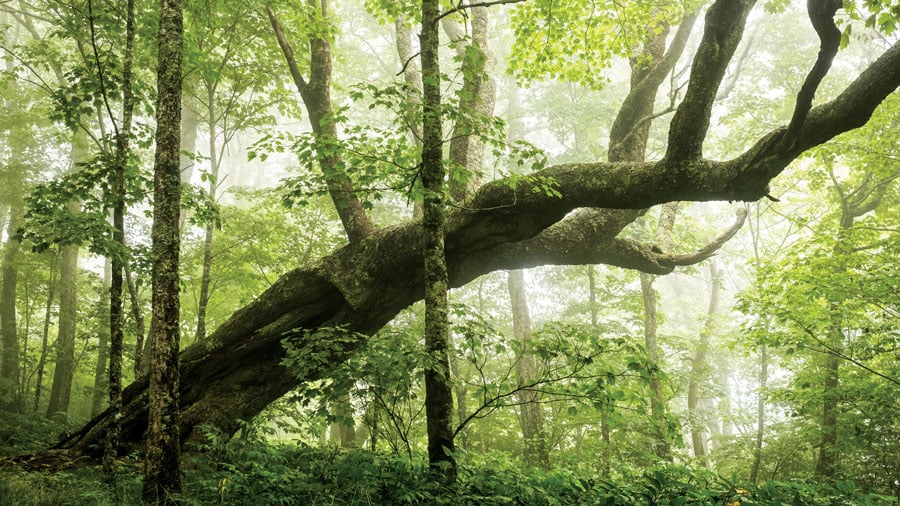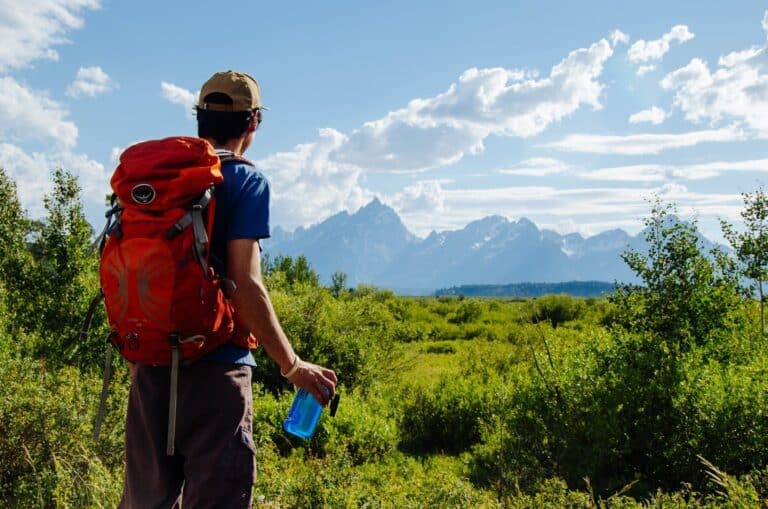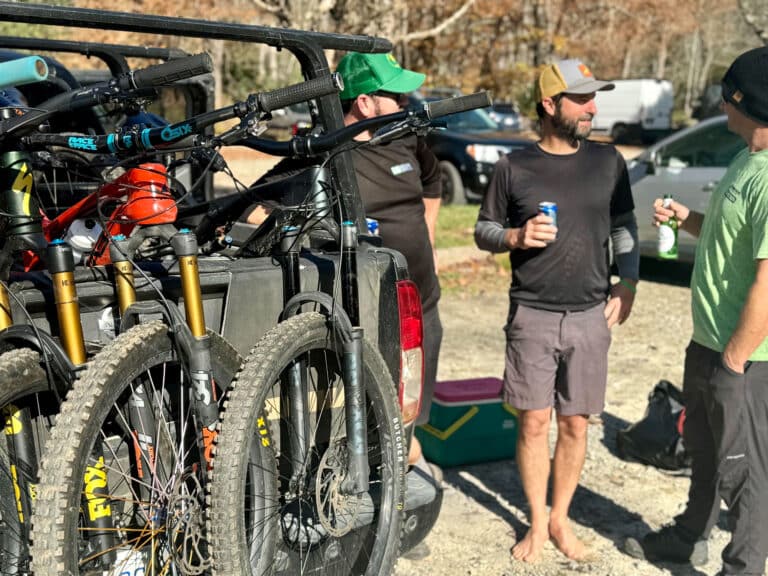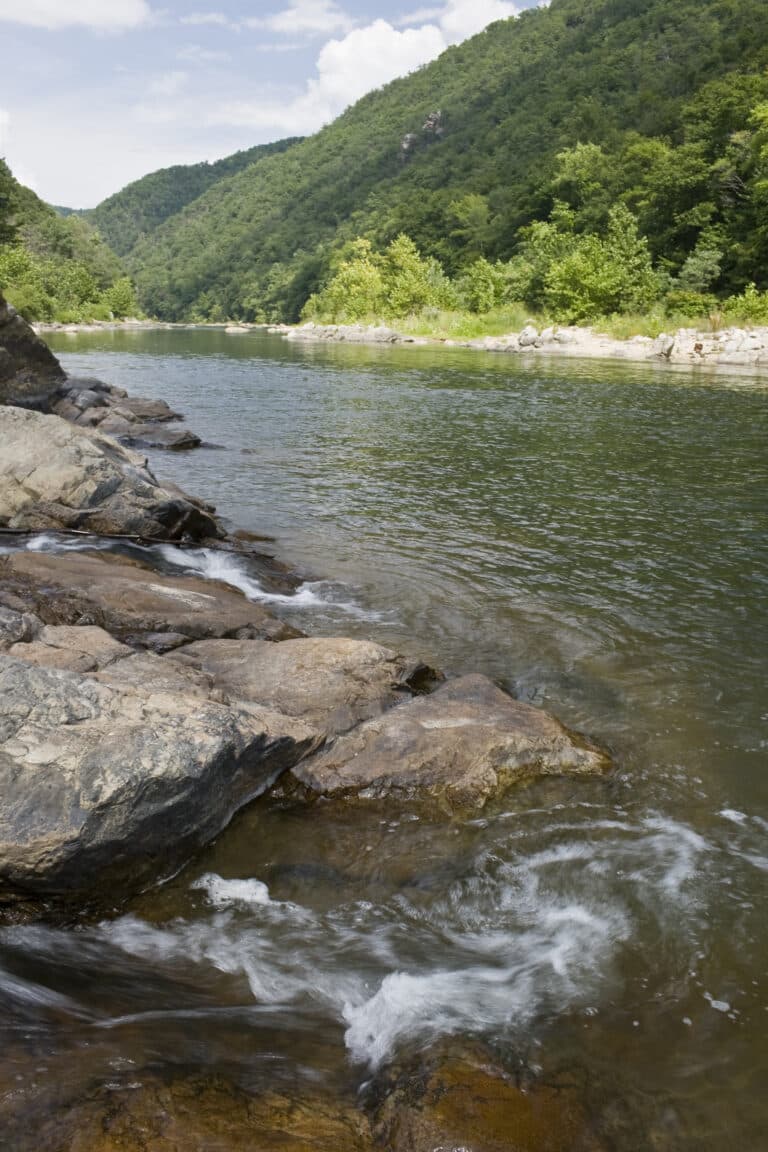Editor’s Note: I have been following the Pisgah-Nantahala National Forest plan for three years. I have attended many meetings, including several in the Big Ivy community where I live. I’ve had candid conversations with dozens of Forest Service leaders, loggers, hunters, and environmentalists. Here’s the biggest lesson I’ve learned: there are no villains in this story. Everyone involved in the forest plan deeply loves the forest and believes that they are fighting for what’s best.
The region is changing: tourism has replaced timber as the main economic engine. An influx of people and development has reshaped land and culture. The forest is changing, too—and so are the values that the forest provides. The national forest continues to provide timber and game, but it’s also become a refuge for rare species and a recreational oasis.
This story asks a simple question: can we all share the forest? It doesn’t have an easy answer.
* * *
You are the owner of a 1.1-million acre mountain estate.
Your property includes cascading waterfalls, ancient forests, and the highest mountains in the East. You can go anywhere you like on your property. You can hike hundreds of miles of trails and paddle, fish, and swim in its pristine streams.
You share ownership equally with every other American, and you pay your staff—the U.S. Forest Service—to manage the property. They maintain the trails and enforce the rules that you make.
Every 20 years, you write a plan that describes how your estate should be managed. You get together with the other owners to hash it out, and your staff writes it all down. This plan is the most important document of your property. It spells out the rules for your property and decides how your property taxes are spent.
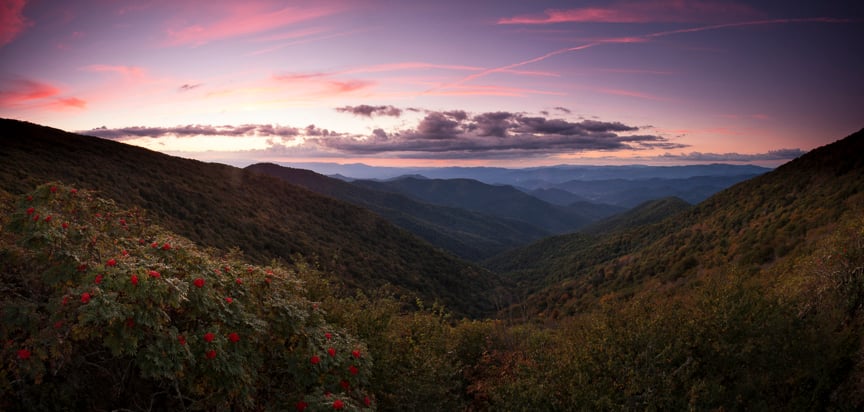
But lately, a few vocal co-owners have outshouted everyone else in deciding how your property will be run. Meanwhile, your staff is changing the rules so that they can cut down some of your favorite places in the forest.
Turf War
The Pisgah-Nantahala National Forest is the second-most-visited national forest in the country. Its popularity has skyrocketed by 136 percent in the past two decades. Over 6.8 million people visited the forest last year, and most of them came to hike, camp, and enjoy its scenic wonders.
The Forest Service recently released a preliminary draft of their forest plan, which will guide the next twenty years of forest decisions. It’s already mired in bitter controversy.
In the draft plan, over 155,000 acres of old-growth forests, popular trails, unique biological areas, and beloved wild places are unprotected. Approximately 60 percent of the forest—630,000 acres—is placed in management areas that allow logging. (The Forest Service says that around 450,000 acres will likely be deemed suitable for timber harvest.)
Hunting groups want even more logging acreage to increase populations of game species like deer and grouse. Recreation and conservation organizations want to protect more of the forest so that logging doesn’t harm sensitive wildlife or damage trails, water, and scenery.
The fight over how to manage national forests is nothing new. Pisgah became the East’s very first national forest in 1912. Immediately, intense debates raged over the future of national forests. Some argued that sustainably cutting timber from the forests made them more productive and useful to Americans. Others believed that protecting the forests’ water, rare species, scenery, and recreational opportunities benefitted more Americans in the long run.
Congress decided in 1960 that national forests should also be managed for multiple uses: timber, watersheds, wildlife, and recreation. In 1964, Congress added wilderness to the list.
A century after acquisition, the Pisgah-Nantahala National Forest faces the same basic conflict: Is the forest a resource to be exploited or a sanctuary to be protected? Or both?
The new forest plan draft is much more than a document. It has become a blueprint for the future of Southern Appalachia, with the potential to bring together different groups—rural and urban, locals and newcomers, hunters and hikers—in a shared vision for the region. So far, however, the contentious forest planning process has only deepened the chasms.
[nextpage title=”Read on!”]
‘A Deep Cultural Divide’
Logging has long been an important part of the region’s economic and cultural landscape. Sawmills and industrial timber operations once blanketed Southern Appalachia, providing jobs and a way of life for many generations of rural communities.
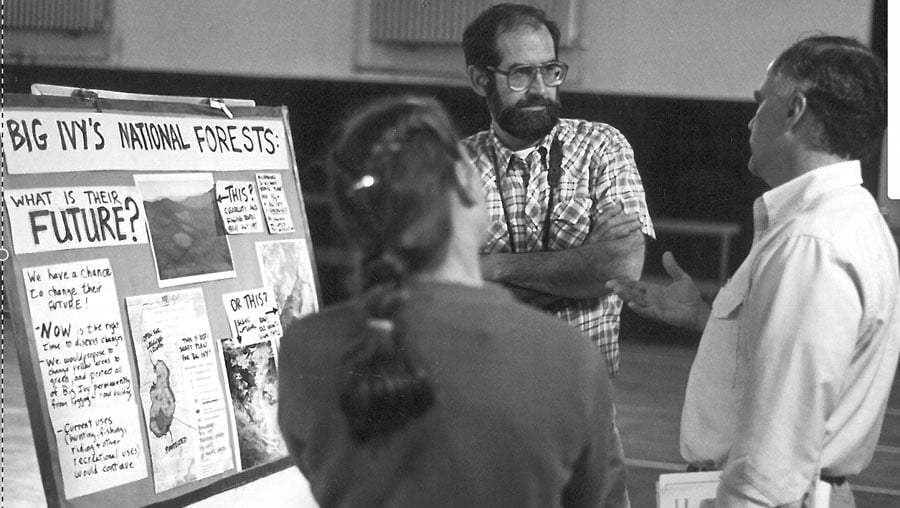
While the timber industry in the mountains has declined, Southern forests still support the most intensive logging operations in the country. Forests in the South are being cut at four times the rate of Amazon rain forests and are experiencing some of the highest rates of logging anywhere on earth.
Over 97 percent of logging in Western North Carolina occurs on private land, and those forests continue to be logged heavily. Some rural communities want to see increased logging in the national forest as well, hoping that it will bring more jobs.
“Hunting is disappearing from the mountains. It’s easier to hunt in the flatlands, and there is more game there.” —Jim Gray, member of the Ruffed Grouse Society.
The Forest Service also wants more logging in the national forest. Its preliminary forest plan proposes logging 4,000 acres per year, a 500 percent increase over current levels.
Jim Gray, a member of the Ruffed Grouse Society, would like to see that number climb much higher to at least 12,000 acres per year—or around 240,000 acres over the life of the plan. The forest regrowth following timber harvests provides more food and cover for wildlife, says Gray, and it also make the wildlife more accessible for hunters.
“Hunting is disappearing from the mountains. It’s easier to hunt in the flatlands, and there is more game there,” says Gray.
“There are too many mature trees in the national forest,” he adds. “There is not much value in trees after a certain stage because the interior of the tree rots and the timber loses its value.”
Gray supports more timber harvests that create early successional habitat for game species like ruffed grouse, deer, and turkey, as well as other wildlife.
Early successional habitat is the open, cleared area following a disturbance—such as logging, fire, farming, and development. According to the North Carolina Wildlife Resources Commission, early successional habitat can include pastures, suburban backyards, old fields, and utility right-of-ways.
Gray acknowledges that there is an abundance of early successional habitat on private land across Western North Carolina, but hunters do not always have access to those lands.
He also believes that the Forest Service should implement more well-managed timber harvests, preferably out of sight of major trails and viewscapes, in part because hunters help pay for it.
“Hunters and anglers pay for the privilege of hunting and fishing through licenses and excise taxes on equipment and ammunition. Other users of the forests do not pay to use the forest. We should get better consideration in return for those fees,” says Gray.
“There are too many mature trees in the national forest. There is not much value in trees after a certain stage because the interior of the tree rots and the timber loses its value.”—Jim Gray
However, hunting licenses and ammunition taxes don’t go to national forests, but to state game agencies. North Carolina’s game agency, the N.C. Wildlife Resources Commission, has been among the most vocal in pushing for more logging and opposing protected areas. At the very beginning of the forest planning process in 2013, N.C. Wildlife Resources Commission’s regional supervisor, Gordon Warburton, delivered a powerpoint presentation that was essentially a playbook for opposing forest protections. Said Warburton, “Our strategy: we have to stand opposed to all new wilderness additions. Period.”
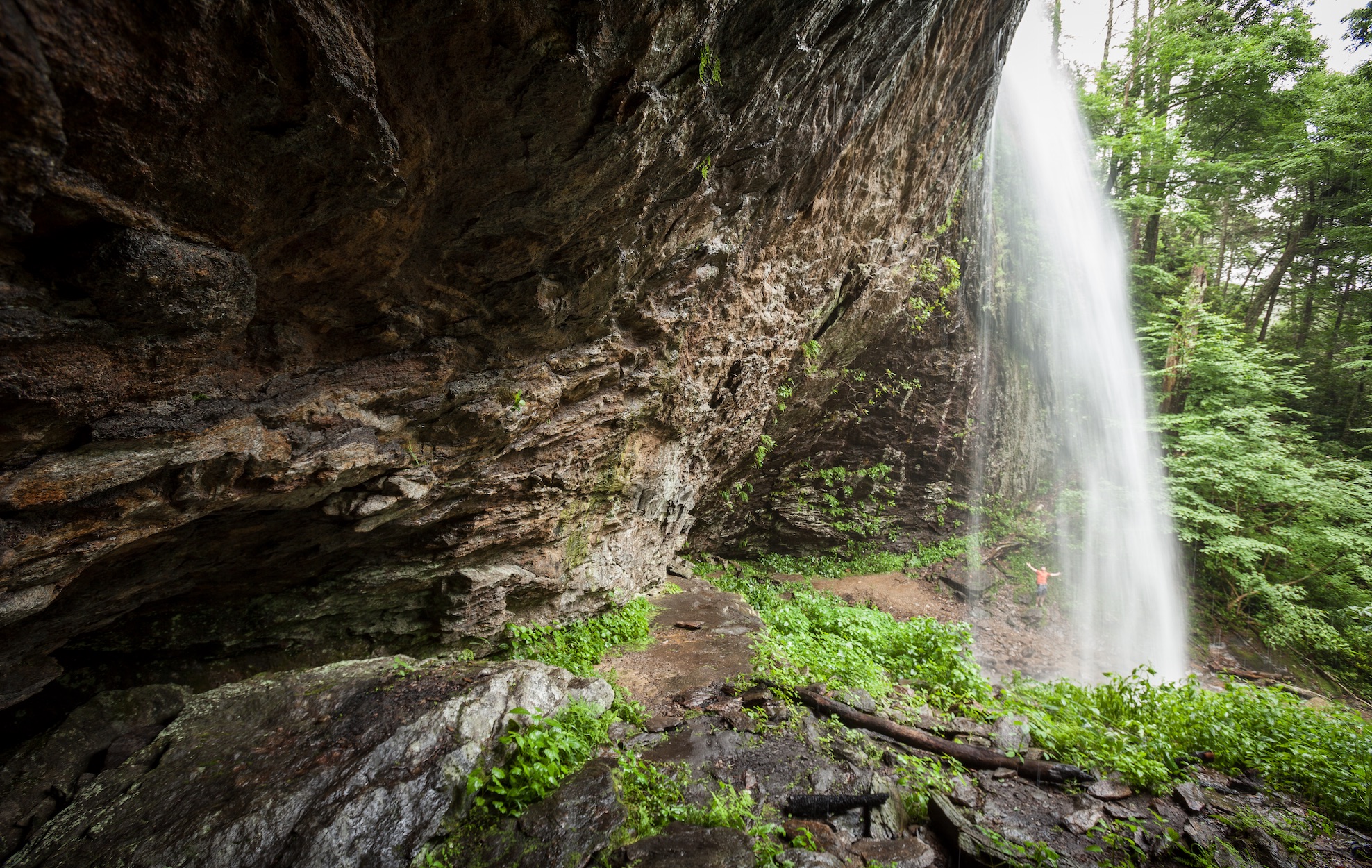
Wilderness is the only Forest Service management area that completely prohibits logging and road building—except in emergencies like wildfire or rescue.
Wilderness areas allow nature to function freely with minimal human management. Wilderness areas are also treasured spaces for recreation, including hiking, camping, paddling, climbing, running, fishing, and hunting.
Hunter and commercial outfitter David Whitmire also doesn’t like the restrictions that wilderness places on logging.
“I can’t hunt where I used to. A lot has changed over the past thirty years. Development. Encroachment. People don’t understand guys walking beside the road with guns,” says Whitmire. “There is a deep cultural divide in the mountains, and the forest plan is revealing that divide.””—David Whitmire, Hunter and Commercial Outfitter
“These woods have always been managed for wildlife. The Cherokee burned the woods to hunt. Logging also helps wildlife,” says Whitmire. “Deer populations are crashing. How low are we going to let their populations go?
In addition, Whitmire worries about the changing demographics, land use, and values in Western North Carolina.
“I can’t hunt where I used to. A lot has changed over the past thirty years. Development. Encroachment. People don’t understand guys walking beside the road with guns,” says Whitmire. “There is a deep cultural divide in the mountains, and the forest plan is revealing that divide.”
As more people have migrated to the mountains, the uses and values of the national forest have shifted dramatically. While hunting and logging were dominant forest uses in the twentieth century, the main use of national forests today is outdoor recreation. According to the Pisgah-Nantahala National Forest’s 2014 Assessment, 60 percent of forest users were hikers. Hunters made up only 2.5 percent.
The vast majority of visitors to the Pisgah-Nantahala today are day-hikers, backpackers, mountain bikers, anglers, equestrians, climbers, runners, and other outdoor enthusiasts. These groups generally support stronger protections for the national forest and a more inclusive, 21st century outlook on the uses and values of the Pisgah-Nantahala.
“Our research is unequivocal: visitors are drawn today by the beauty of this area,” said Marla Tambellini, Vice President of Marketing at the Asheville Convention and Visitors Bureau, at a public meeting about the forest plan. “Setting aside natural and wild areas is good for residents today and one of the best legacies we can leave the next generation.”
The Pisgah-Nantahala National Forest is the backbone of Appalachia’s economy, which is driven largely by recreation and tourism. Across Southern Appalachia, recreation provides $90 billion and over 1 million jobs.
“Our region’s health and vitality depend on national forests,” says Sam Evans, an attorney with Southern Environmental Law Center. In addition to the jobs and recreation they provide, national forests in Southern Appalachia provide drinking water to over 11 million people and protect the headwaters of most major rivers. The total value of water flowing from national forestlands amounts to $7.2 billion per year.
National forests store carbon, protect species, filter the air, and provide other key ecosystem services for our region’s health, says Evans. Ecosystem services flowing from national forests are valued between $96 billion and $5.7 trillion annually.
The Forest Service has been slow to respond to the recreation revolution and the shift in forest values. As an agency, it has traditionally prioritized timber sales and logging projects over recreation and conservation. As a result, previous forest plans have become embroiled in conflict and litigation.
The Pisgah-Nantahala Forest planning team is hoping that this plan will be different. Already, the Forest Service has broadened its outreach and expanded public involvement. And it has convened leaders from a variety of user groups to help shape the plan.
“Cooperation is our best hope for this forest plan to succeed,” says Matt McCombs, deputy forest supervisor for National Forests in North Carolina. “In the end, though, the Forest Service will do what we think is best.”
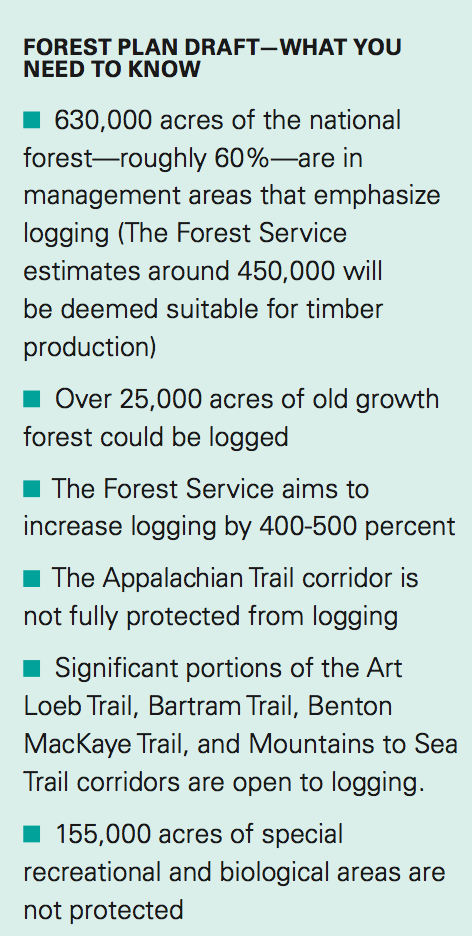
So far, they appear to be making the same mistakes of the past. The preliminary forest plan places over 25,000 acres of old-growth forest in logging-intensive management.
Also open to logging are large sections of popular trail corridors, including the Art Loeb Trail, Benton MacKaye Trail, Bartram Trail, and Mountains to Sea Trail.
So are Cedar Rock, Tellico Bald, Daniel Ridge, Linville Mountain, Upper Wilson Creek, Chunky Gal, Upper Courthouse Creek, Shope Creek, Upper Santeetlah Creek, Dismal Falls, Siler Bald, parts of Panthertown Valley, and 4,000 acres of old-growth and rare species habitat in Big Ivy. The Appalachian Trail corridor could also be logged.
[nextpage title=”Read on!”]
The Missing Middle
No one has fought harder for cooperation than Brent Martin, Southern Appalachian director of The Wilderness Society. Surprisingly, Martin has been lobbying against wilderness designation in order to accommodate a broader base of recreation users.
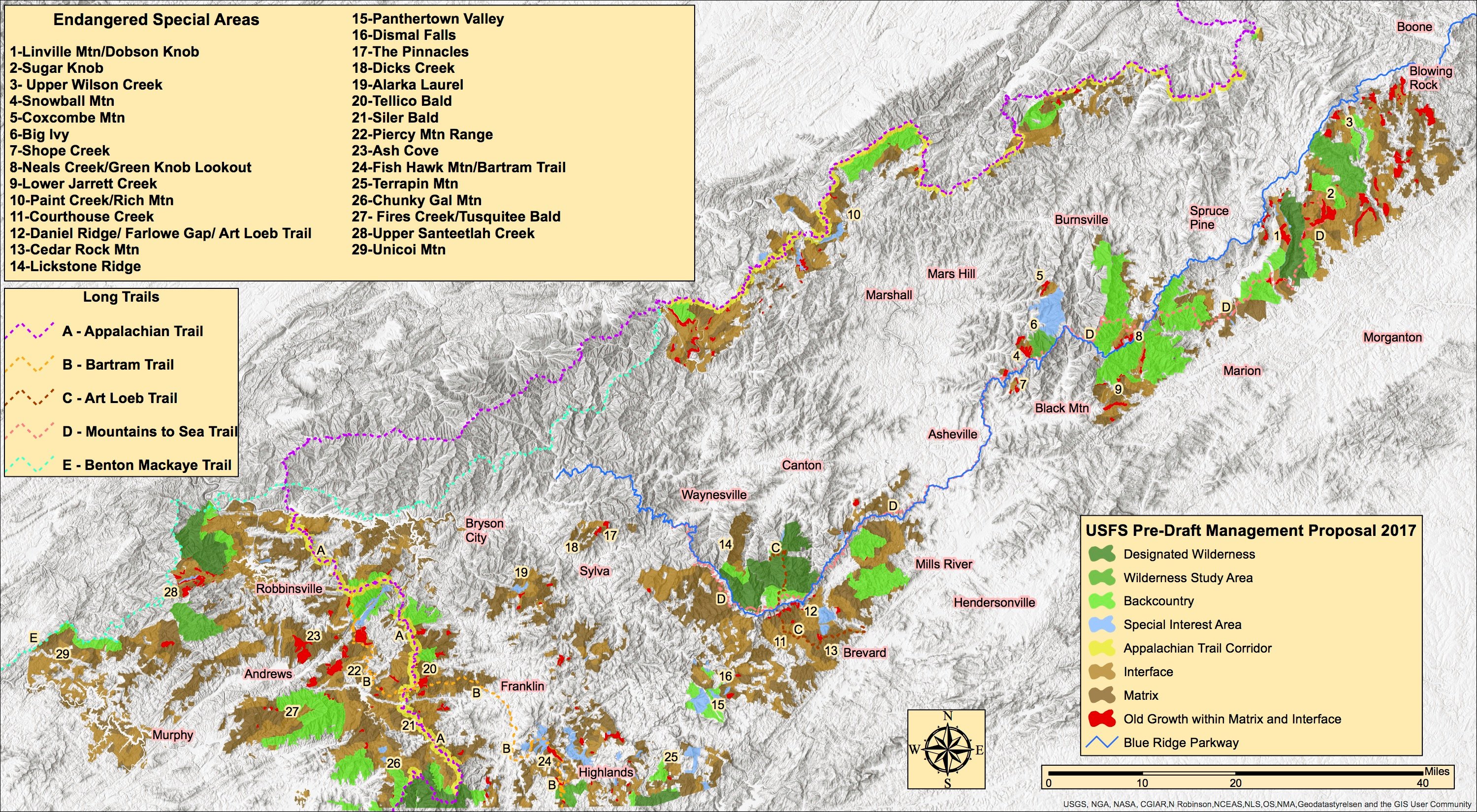
“I could have stayed safely in my conservation corner and advocated for more wilderness,” says Martin. “But then everyone else would stay in their corners and nothing would change. After years of working on forest planning, it was clear that we needed a new, more cooperative approach.”
Martin invited timber and hunting leaders to join together with conservation and recreation representatives to form the Nantahala-Pisgah Forest Partnership. After three years of meetings and dialogue, the partnership has reached broad conceptual agreement on most of the forest planning issues: they have agreed to recommend more logging acreage while also increasing the amount of protected areas for conservation.
However, the Forest Service decided not to formally recognize the partnership. Instead, the Forest Service spent over $100,000 to create its own group: the Stakeholders Forum. It includes many of the same representatives from the partnership, but it also adds a few outspoken members who, thus far, have impeded any compromise. As a result, the Stakeholders Forum has been deeply entrenched and unable to reach consensus.

“The Forest Service has undercut our middle-ground partnership and stacked their Stakeholders Forum with a few extremists from hunting groups who are unwilling to compromise at all,” says Martin.
“The original partnership did not reflect the full spectrum of users,” replies Forest Service deputy supervisor Matt McCombs. “The Stakeholders Forum is a more diverse representation of forest interests.”
21 of the 27 members of the Stakeholders’ Forum are older white males. There are no minorities or youth representatives.
But Martin wasn’t ready to give up on collaboration, so he forged yet another coalition. This time, he brought together mountain bikers and wilderness advocates—two recreation groups that traditionally had not worked together. The Wilderness Act does not allow bicycles in wilderness, so even conservation-minded mountain bikers often found themselves unable to support wilderness proposals for the Pisgah-Nantahala.
Martin met with mountain bike leaders and hammered out a proposal for a new National Recreation Area in Pisgah-Nantahala National Forest. The proposal would open the Harpers Creek and Lost Cove Wilderness Study Areas near Boone, N.C., to mountain bike use, removing its Congressional Wilderness Study Area status and simultaneously replacing it with a National Recreation Area designation that would protect its wild character permanently. Over 40 regional organizations and businesses also signed on to support the National Recreation Area proposal.
“It made national headlines. It was a precedent-setting agreement,” says Martin. “We showed that groups with competing agendas could come together and find common ground.”
But then “one obstructionist tanked the whole deal,” says Martin.
The ink had barely dried on the agreement when John Wilson, a local businessman whose family owns the Blowing Rock attraction and has deep roots in the area, organized opposition to the National Recreation Area proposal. Other organizations, including Appalachian Voices and Sierra Club, joined him. Wilson, who has worked for many years with land trusts and conservation interests, including many major funders, did not want to open two Wilderness Study Areas to shared use with mountain bikers.
“We have so little Wilderness in North Carolina,” says Wilson. “The Harper Creek and Lost Cove Wilderness Study Areas contain some of the most pristine headwater streams, waterfalls, and old growth forest in the East.”
Ironically, failure to reach an agreement for Harper Creek and Lost Cove has diminished support for more wilderness across the national forest. Because the National Recreation Area would have created an important new mountain biking opportunity, the mountain bike community was prepared to support over 100,000 acres of additional wilderness recommendations in the Pisgah-Nantahala. That support is now at best uncertain.
“It’s been heartbreaking,” says Martin, who is no longer with The Wilderness Society. “Extremists on both sides have undermined every effort to cooperate and find middle ground,” says Martin. “Clearly there are easy compromises that nearly everyone agrees on, but a few extremely vocal individuals have hijacked the entire forest plan, and the Forest Service has enabled it to happen.”
[nextpage title=”Read on!”]
The W-Word
Here is the simple bargain that nearly everyone supports: more timber harvests counterbalanced by more protected areas, including wilderness.
“If we’re going to ramp up timber harvest levels, we also need to identify the areas where other values, like rare habitats, wilderness, and backcountry recreation, will continue to be represented in the future,” says SELC’s Sam Evans.
Timber industry leaders have generally seen this as a good deal. They believe that broader backing for timber harvests can be achieved if they also support wilderness protections for special areas of the forest. However, an outspoken few have been unwilling to support any new wilderness, mainly because it prohibits logging and motorized vehicles.
“How are we gonna get a 500-pound bear out of a wilderness area?” asks David Whitmire, a member of the Stakeholders’ Forum. “Wilderness also invites another class of people in here.”
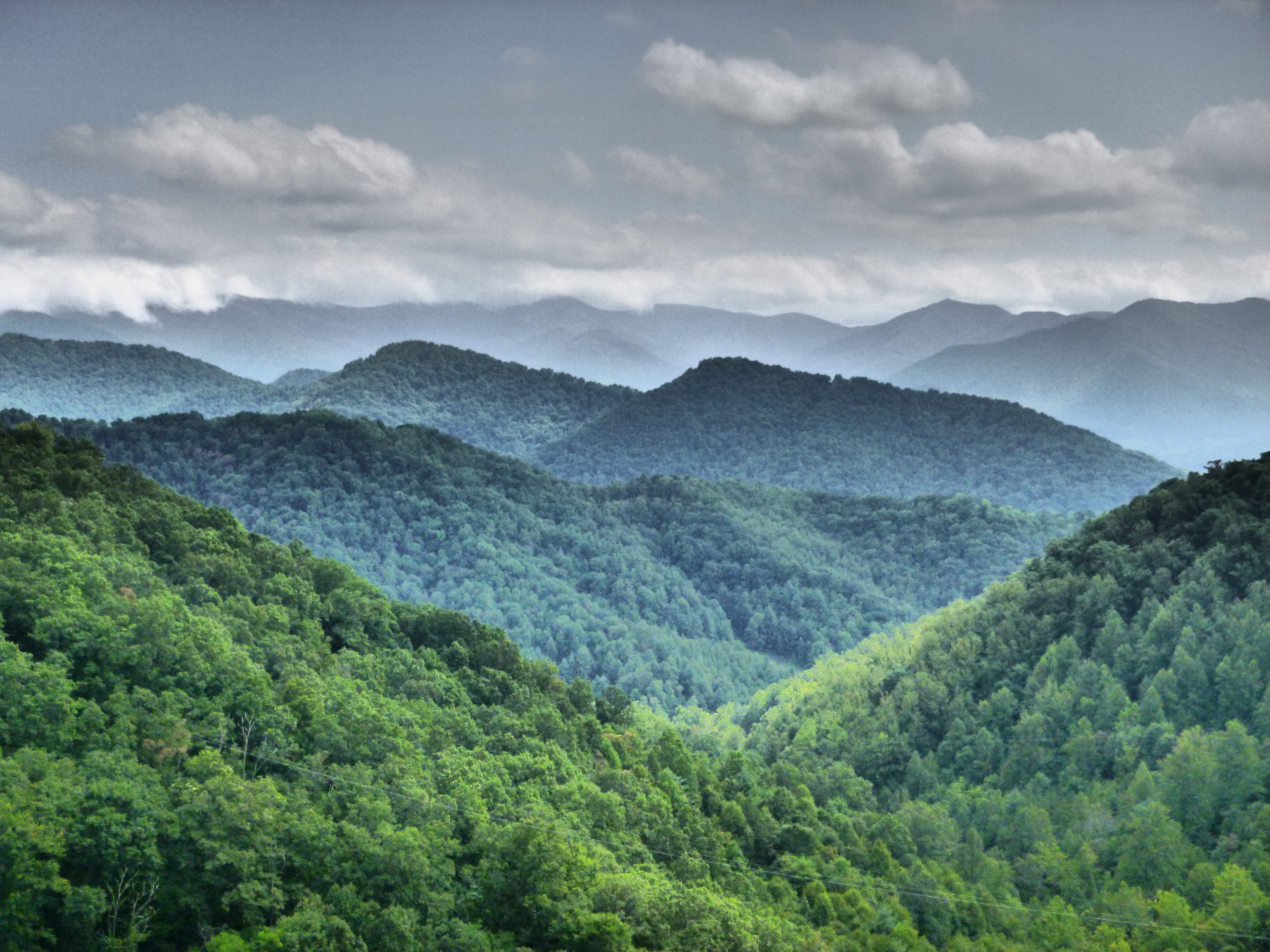
22 percent of Western North Carolina is national forest, and some locals resent the lost tax revenue and demographic changes that the national forests have brought.
Both Whitmire and Ruffed Grouse Society chapter president Jim Gray also believe that wilderness reduces the availability of game species like deer and grouse.
“People have this Disney image of critters all happy in the deep forest, but deer and grouse like open areas, too,” says Gray. According to the North Carolina Wildlife Resources Commission, the numbers of ruffed grouse and deer harvested from national forests have been trending downward. Gray blames the declining numbers on too many protected areas and not enough logging.
Gray and others have led efforts to pass anti-wilderness resolutions in 12 conservative-leaning counties across Western North Carolina.
But one county passed a pro-wilderness resolution: Buncombe County, the most populous county in the mountains and home to the largest city in Western North Carolina.
The Buncombe County Commission unanimously supported a resolution to recommend wilderness for the Big Ivy section of the Pisgah-Nantahala, located about 20 miles northwest of Asheville. Big Ivy includes the Craggy Gardens area and is the most photographed spot along the Blue Ridge Parkway. It’s also home to 70-foot waterfalls, dozens of rare and endangered species, and one of the largest old-growth forests in the East.
The Big Ivy wilderness proposal has received overwhelming public support. Hundreds attended the County Commissioners meeting to speak unanimously in support of the wilderness resolution. A year earlier, over 400 Big Ivy supporters packed a community meeting with the Forest Service, many wearing “Don’t Cut Big Ivy” t-shirts. Nearly all spoke in favor of permanently protecting Big Ivy from logging. Even stridently anti-wilderness campaigners Jim Gray and David Whitmire have voiced general support for wilderness in Big Ivy.
Even stridently anti-wilderness campaigners Jim Gray and David Whitmire have voiced general support for wilderness in Big Ivy.
So far, however, the Forest Service has not protected Big Ivy from logging. Instead, it has targeted one-third of Big Ivy for logging-priority management.
“Big Ivy is a test case for the forest planning process,” says Jeremy Brookshire, a carpenter who lives in the Big Ivy community. “Does the Forest Service really respond to public input, or is it just going through the motions?”
There is overwhelming public, political, and scientific support for permanently protecting Big Ivy, says Brookshire. “So why doesn’t the preliminary forest plan draft reflect that?”
One possible explanation is that the Forest Service doesn’t want wilderness in Big Ivy—or anywhere else.
Forest Service officials say that wilderness “takes tools of out their toolbox” and constrains them from conducting sustainable forest restoration. The Forest Service also generates revenue by harvesting timber. The Forest Service is financially and institutionally motivated to cut down forests, which is prohibited in wilderness. The Forest Service is also getting intense political pressure not to recommend any new wilderness.
[nextpage title=”Read on!”]
To Log Or Not To Log?
Fundamentally, the forest plan raises an almost-philosophical question: Do forests need constant logging and active management, or can nature grow healthier forests than we can if we mostly leave them alone?
The Forest Service—whose logging-intensive agenda aligns most closely with the interests of hunting organizations and timber companies—claims that forests are more productive when actively managed. Conservation organizations assert that uncut, intact forest ecosystems are more resilient and beneficial, especially in the 21st century.
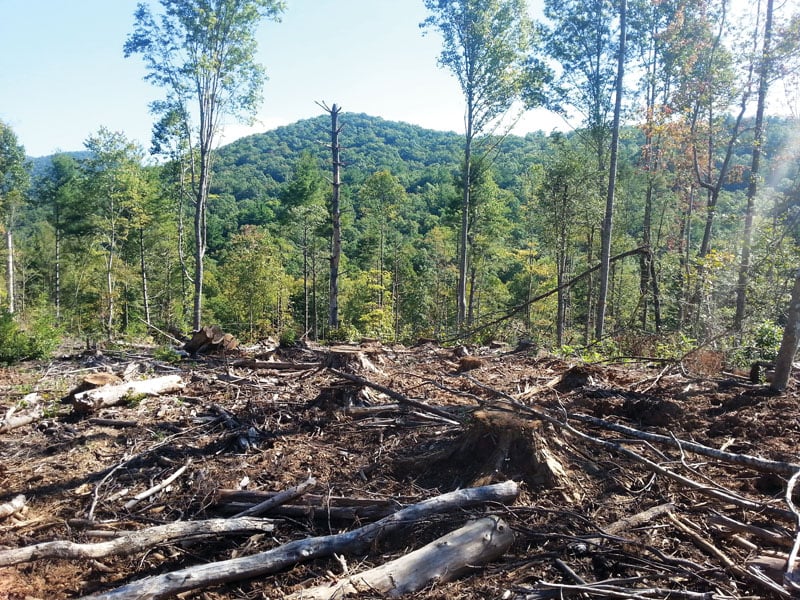
The data is mixed. Silvicultural studies suggest that thinning young, previously degraded forests improves productivity, especially of marketable tree species like oaks. And cutting forests to create early successional habitat leads to increases in deer, turkey, and grouse populations. But other scientific studies indicate that mature, uncut forests provide healthier air and water quality, more carbon storage, and more overall biological diversity.
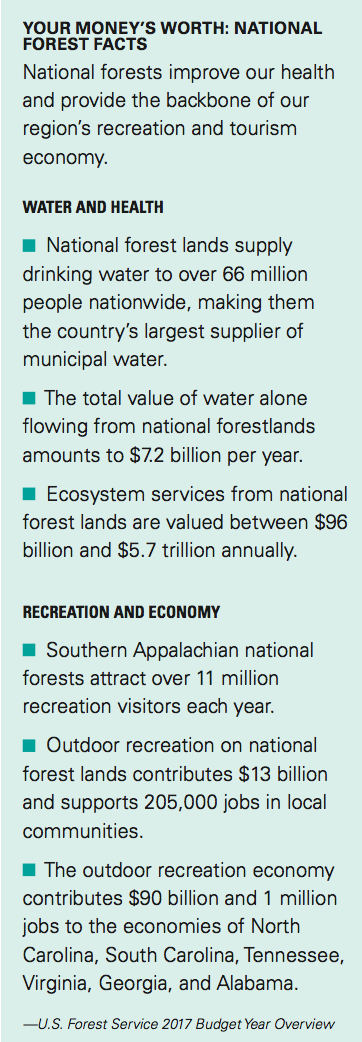
The forest plan has become a referendum on the future of our forests—and the economies that grow around them. Do we want a more actively managed forest that emphasizes game and timber, or a more tourism-friendly forest focused on recreation and ecosystem health?
“These are working forests, and they will always be working forests,” says Forest Service deputy director Matt McCombs. McCombs believes that the Forest Service’s mission to “sustain the health, diversity, and productivity of national forests” requires perpetual logging of public lands. He also maintains that logging ultimately improves forest health—by removing dead and diseased trees, for example, or creating clearings that produce more browse for deer and other wildlife.
“Forested lands have better outcomes when sustainable forestry is practiced, and they also have economic benefits as byproducts,” says McCombs. “We can accelerate the pace and scale of forest restoration through sustainable forestry. Forests are ultimately enhanced by managing them for game and timber.”
Adam Macon, program director for the Dogwood Alliance, says that the latest science shows otherwise.
“Publicly owned national forests are more valuable standing than cut down, says. Intact forests provide far more long-term ecological and economic assets than board feet of timber.”—former U.S. Forest Service biologist Karin Heiman
“Logging has a lot of impacts that make the forest less healthy, less resilient, and more vulnerable to insect infestations, invasive species, and disease,” he says. Logging causes sedimentation that clogs rivers and streams. The bulldozers, skidders, and other heavy machinery create easy corridors for pests and disease to spread. Logging usually is accompanied by heavy and repeated use of pesticides, and it disrupts a web of animal, plant, soil, insect, and microbial diversity that requires many decades for forests to recover. Logging mature forests also releases more carbon, especially from the soil.

Economically, protecting forests for conservation and recreational uses provides more benefits than logging them. Recreation in the Pisgah-Nantahala provides 10 times as many jobs as and five times as much revenue, according to the 2014 U.S. Forest Service Assessment. Nationwide, the Forest Service reports that recreation provides 31 times more jobs to rural communities than timber sales.
“Publicly owned national forests are more valuable standing than cut down, says former U.S. Forest Service biologist Karin Heiman. “Intact forests provide far more long-term ecological and economic assets than board feet of timber.”
[nextpage title=”Read on!”]
This Land Is Your Land
The Forest Service is in transition. It struggles internally between old-school foresters intent on maximizing timber harvests and a new generation of recreation-friendly rangers. The Forest Service’s top three forest plan leaders have all left the Pisgah-Nantahala in the past three years, presenting both a challenge and opportunity for the Forest Service to move in new directions.
The overwhelming majority of forest users are hikers and outdoor enthusiasts, but so far, the forest plan leaves many of the best and most beautiful places in the forest unprotected.
The good news is this: The 1.1-million-acre Pisgah-Nantahala can accommodate all of the competing uses: commercial timber sales for industry, early successional forests for deer and grouse hunters, protected headwaters for municipal drinking water, habitat protection for endangered species, wilderness areas for solitude-seekers, old-growth forests for science and heritage, and trail networks for everyone to enjoy.
Even better news: nearly everyone agrees on the solution. Most of the stakeholders support the basic compromise formula: more timber harvests in exchange for more protected acreage.
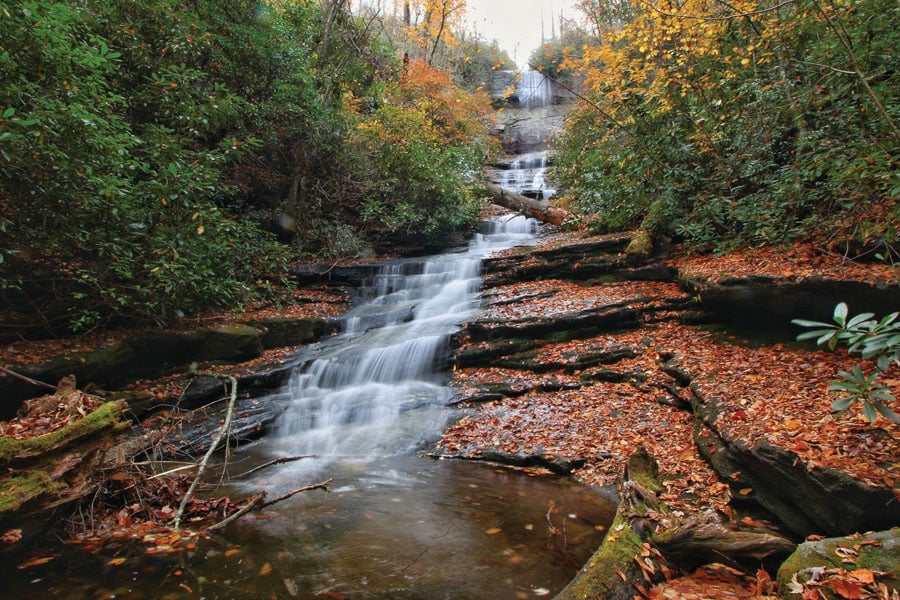
However, the Forest Service’s preliminary forest plan draft tilts lopsidedly toward logging. It aims to increase logging five-fold while leaving over 125,000 acres of ancient forests, recreational hotspots, and unique biological areas unprotected.
Even the timber industry worries about the preliminary plan draft. “Right now, it’s a lose-lose situation,” said one forest products representative. “If we can’t reach a compromise that supports the full spectrum of interests, then we will likely end up with even fewer timber harvests. Every single timber sale will be appealed and challenged, and this plan will be in litigation gridlock for the next two decades.”
The win-win plan—more timber harvests and more protected areas—is what most everyone wants—except an uncompromising few and perhaps the Forest Service itself.
“The solution is within reach,” says SELC’s Sam Evans.
Do we have the will to work together? Or will we miss the forest for the trees?
With stakeholders at an impasse, the Forest Service will rely on public input to make its final decisions. How do you want your 1 million acres to be managed? Now more than ever, your input will shape the future of the forest.
